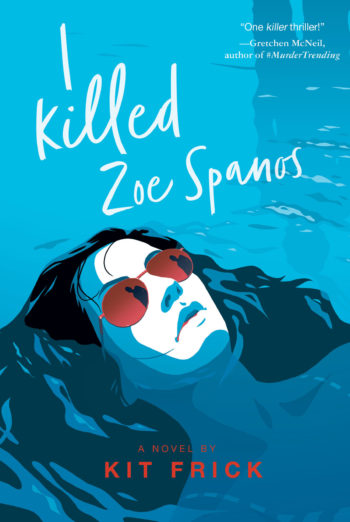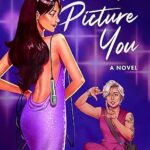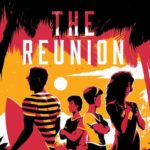
Author Interview: I Killed Zoe Spanos by Kit Frick
I Killed Zoe Spanos by Kit Frick releases next Tuesday, June 30th, and we are thrilled to share this author interview with you all!
There is still time to preorder, and even signed copies here! The beautiful first printing has blue sprayed edges, and if you submit your preorder receipt Kit will be donating $2 for every entry, to The National Center for Missing and Exploited Children (NCMEC) to assist in their mission to help find missing children, reduce child sexual exploitation, and prevent child victimization. And you a swag pack too!


I Killed Zoe Spanos
by Kit FrickPublished by: Margaret K. McElderry Books
on June 30, 2020
Genres: Young Adult, Mystery, Thriller
Audiobook Libro.FM
Goodreads
This gripping thriller follows two teens whose lives become inextricably linked when one confesses to murder and the other becomes determined to uncover the real truth no matter the cost.
What happened to Zoe won't stay buried...
When Anna Cicconi arrives to the small Hamptons village of Herron Mills for a summer nanny gig, she has high hopes for a fresh start. What she finds instead is a community on edge after the disappearance of Zoe Spanos, a local girl who has been missing since New Year's Eve. Anna bears an eerie resemblance to Zoe, and her mere presence in town stirs up still-raw feelings about the unsolved case. As Anna delves deeper into the mystery, stepping further and further into Zoe's life, she becomes increasingly convinced that she and Zoe are connected--and that she knows what happened to her.
Two months later, Zoe's body is found in a nearby lake, and Anna is charged with manslaughter. But Anna's confession is riddled with holes, and Martina Green, teen host of the Missing Zoe podcast, isn't satisfied. Did Anna really kill Zoe? And if not, can Martina's podcast uncover the truth?
Author Interview
If someone showed up in your life, pretending to be you, what’s the one thing that would eventually give them up?
Oooh. If I told you, then I’d have to kill you.
(Kidding. Maybe.)
.
Tell us about the setting. Why the Hamptons?
I chose the Hamptons setting largely because of Daphne du Maurier’s Rebecca, which was a big inspiration for the novel. Rebecca is set in a tony seaside suburb of London, England, so when thinking about the perfect setting for I Killed Zoe Spanos, placing the mystery in an affluent seaside village in the Hamptons, just east of New York City, was a natural fit.
I love a vivid, atmospheric setting, and creating the fictional Hamptons town of Herron Mills Village—which is based closely on East End villages like East Hampton and Amagansett—was key for me as a writer to getting to the heart of this story. The setting is truly a character in its own right.
.
When researching the psychological aspects of the novel, what’s the thing that terrified you most?
Memory is a fascinating and scary thing. Without giving away any spoilers, the malleability of memory plays a key role in the novel, and it’s something I spent a lot of time thinking about when building the story. People like to say, “I have a great memory,” or “my memory is terrible,” but usually it’s not as cut-and-dried as those statements make it out to be. In fact, those of us with “great” memories often misremember important events, and those of us who readily acknowledge that our memories are bad are probably just more tuned into the faultiness of the human brain in this regard. There are illuminating studies on eyewitness testimony and false memories that would blow your mind.
I’ve had it both ways—memories that later proved to be false and real memories I’m told I shouldn’t be able to recall—so I really empathize with my protagonist Anna, who is unreliable yet very relatable in her struggle.
What did you learn in writing your previous books that you implemented in writing Zoe?
Every book is its own beast, and the biggest writing lesson I’ve taken away from the past few years is that nothing I’ve learned through drafting a previous book is going to lead me down a fool proof path when starting a new one.
That said, when I set out to write I Killed Zoe Spanos, a book that uses multiple timelines and points of view to tell the story, I was able to draw from my experience writing my debut, See All the Stars, which takes place in two interwoven timelines, and my second novel, All Eyes on Us, which is told through two alternating points of view.
Basically what I’ve learned is that because I’m a writer who is unlikely to craft a mystery in one chronological narrative, I have to spend a good deal of time playing in the conceptual sandbox before I start to draft. I outline briefly but comprehensively, by which I mean, I may not know more than a sentence or two about what needs to happen in any given chapter, which gives me plenty of space to play while drafting, but I’ve usually made most of my structural decisions very early on in the process. While of course changes do happen mid-draft, having a kind of story map helps me stay focused on the forward trajectory.
.
If a character from your previous books were going to give Anna advice, who would it be and what would they tell her?
Ellory, the protagonist from See All the Stars, and Anna from I Killed Zoe Spanos are both teen girls who have made pretty big, hard-to-live-with mistakes. Ellory’s journey throughout the novel is all about living with guilt, accepting culpability, and learning to forgive yourself and move forward. She’d have a lot to say to Anna on the topic—maybe they’re somewhere out there in book land right now, swapping stories and figuring out what’s next.











